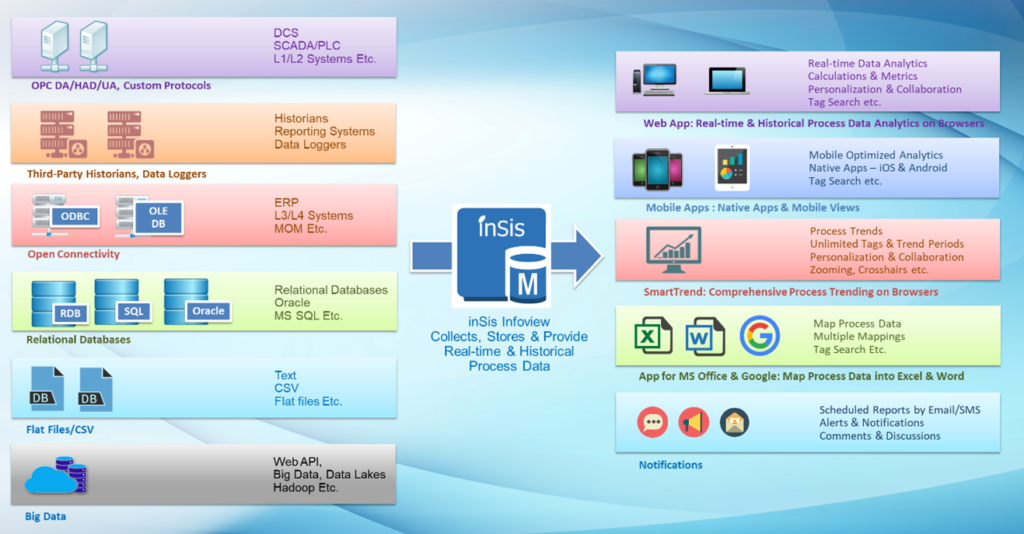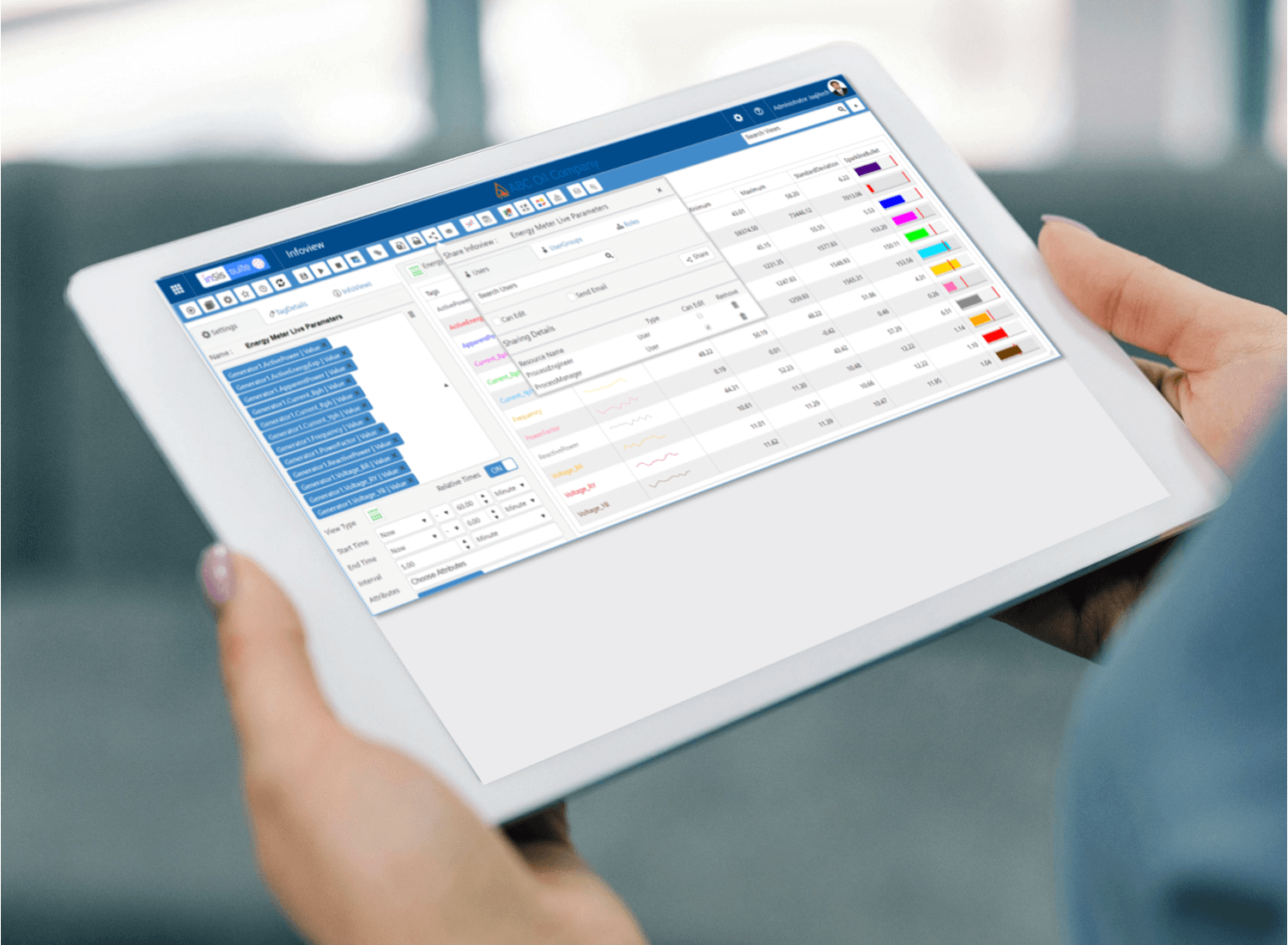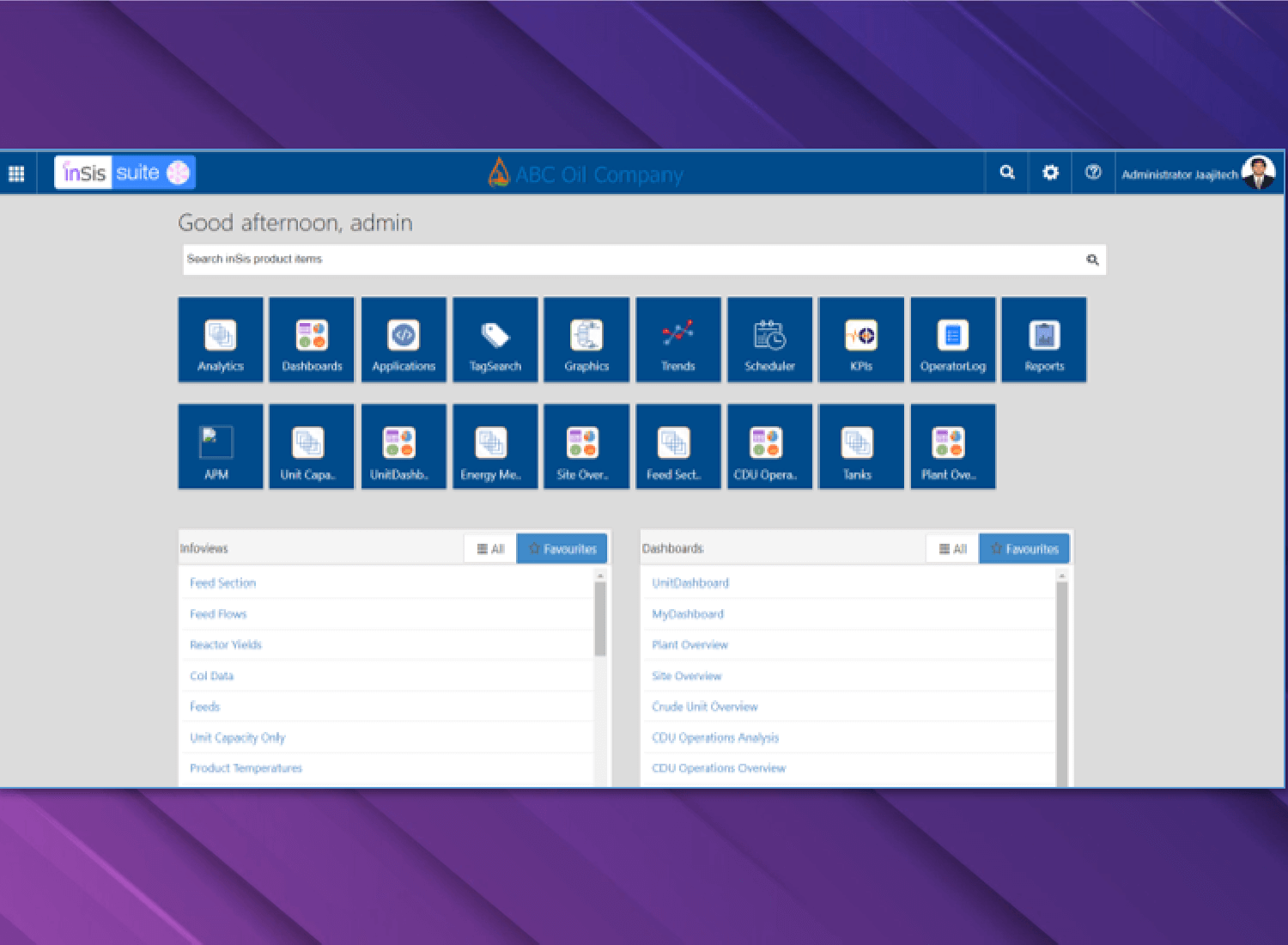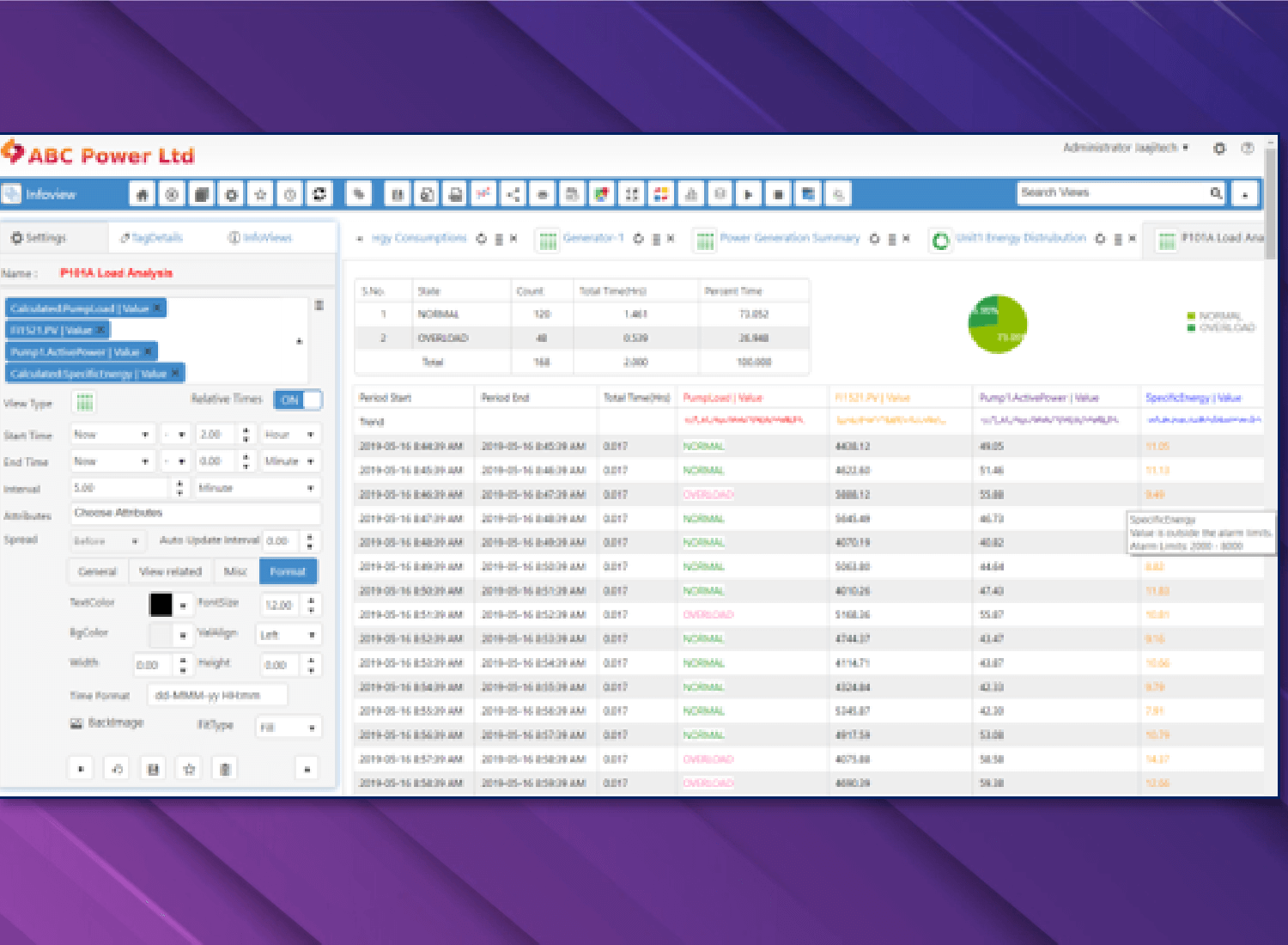Integration through RFCs
Data Historian & Analytics
Streamline data, optimize operations
Solution benefits
inSis Data Historian brings all your industrial data together on a single platform, while supporting industry standard protocols, enabling seamless analysis and optimization for peak performance.
Visualizations
Accurate & timely data
Upto 1 second
Time series frequency
How this helps your operations
Core features
inSis Data Historian seamlessly integrates with a wide range of data sources to bring all your industrial data together, empowering comprehensive analysis.
- Industrial Control Systems – DCS, PLC, and SCADA systems for real-time process data
- Enterprise Systems – Integration with SQL databases like Oracle and SAP allows for historical data and contextual information
- Sensor Networks – Direct connection to L0/L1 sensors for capturing granular process details
- Flexible File Support – Import data from spreadsheets (XLSX), flat files, and CSV formats for even greater versatility
inSis Data Historian speaks the language of your industrial equipment, ensuring seamless communication with diverse protocols for comprehensive data acquisition.
- Supports industry-standard protocols like OPC DA/UA/HDA, ODBC, and SQL for effortless integration
- Connects directly to devices using protocols like Modbus, Ethernet/IP, ProfiNet, and Serial for real-time data access
- Integrates with IoT Edge devices and utilizes RESTful APIs to capture data from a wide range of sources
Ensure the integrity of your data analysis with inSis Data Historian’s robust data validation features.
- Identify and eliminate corrupt or invalid data points before they skew your analysis, through Bad-data-check
- Outlier-check flags data points that fall outside expected ranges, allowing for investigation of potential anomalies
- Utilize the exponential filters to smooth out noisy data, for accurate trend analysis
- Perform complex calculations with the in-built calculation engine, thus streamlining your workflow and ensuring data consistency
Simplify data management with inSis Data Historian’s intuitive data handling features.
- Import and export tag lists for easy configuration and migration between projects
- Bulk Tag Upload feature saves time by uploading large numbers of tags simultaneously, streamlining your setup process
- The user-friendly tag browser allows you to easily find, view, and edit tag properties for optimal data organization
- Enhanced device portability helps you to effortlessly transfer tags and configurations between devices
Store all your industrial data with confidence using Historian’s secure storage solution.
- Scale effortlessly with inSis’ No-SQL time-series DB with unlimited data storage
- Robust data encryption and compression techniques ensure data security and minimize storage requirements
- Store both discrete and continuous data within a single platform for comprehensive analysis
- The historian meets rigorous VAPT standards, guaranteeing the highest level of data security
Gain real-time insights from anywhere with the powerful data analytics and mobility features.
- 30+ customizable role-based visualizations assist in exploring your data effectively; build dashboards and reports effortlessly with drag-and-drop functionality
- Schedule and receive automated reports directly in your web browser with Web-Based Automated Reports
- Utilize SmartTrend for anomaly detection, the Excel Add-In for in-depth analysis within your familiar spreadsheet environment, access data on the go with mobile apps, automate data processing tasks with the scheduler, and perform complex calculations within the historian using the integrated calculation engine
How it works
A data historian acts as a central hub for your industrial data. It seamlessly connects to various sources like DCS, PLCs, SCADA systems, and even sensors, collecting real-time and historical data. The data historian then cleans and organizes this raw data, ensuring its accuracy and consistency.
With powerful tools, the data historian analyzes the data, identifying trends and anomalies. Finally, the data historian presents this information in clear and user-friendly formats like charts and dashboards. Ultimately, the data historian empowers you to make data-driven decisions, optimize processes, and achieve peak performance in your operations.
A modular solution
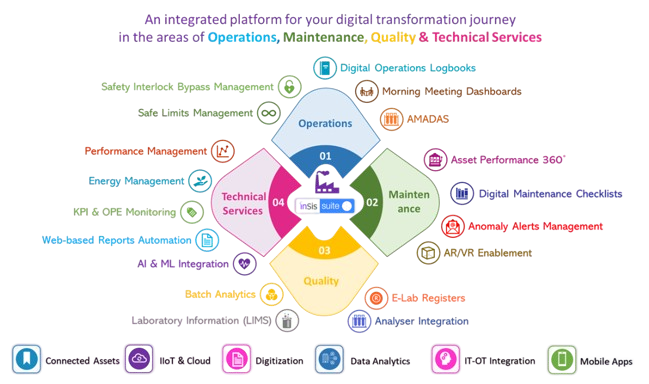
Resources

Comprehensive Management of Online Analysers for a Refinery through ABB
The key challenge faced was the real-time monitoring and calibration of online analyzers and data

Implementation of Real-time Monitoring of Gas Flows & Distribution
The solution we designed ‘InSis Web SCADA’ enabled to relay mass composition of gas for
